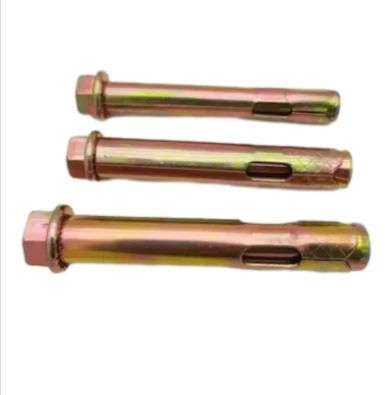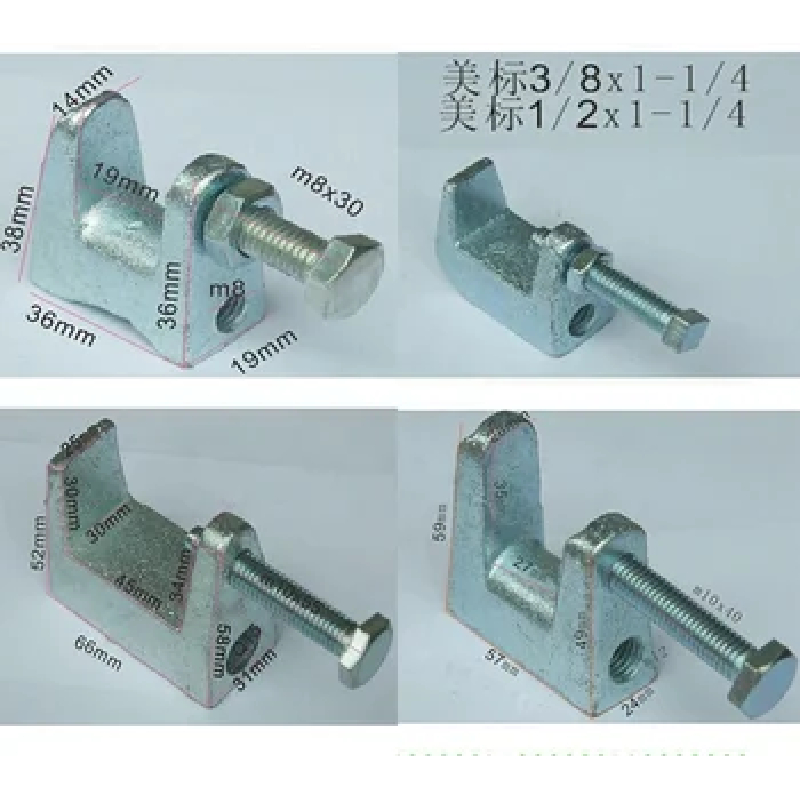Мау . 05, 2025 23:23 Back to list
Hex Drive Screw Insert Nuts Durable & High Torque for Easy Installation
- Deep Dive into Hex Drive Head Screw Insert Nut Fundamentals
- Technical Superiority and Engineering Innovation
- Performance Metrics Comparison Across Leading Brands
- Specialized Customization Solutions Available
- Application Case Studies Across Multiple Industries
- Installation Techniques for Maximum Structural Integrity
- Future-Proofing Construction with Hex Drive Solutions

(hex drive head screw insert nut)
Understanding the Power of Hex Drive Head Screw Insert Nuts
Hex drive head screw insert nuts represent a revolutionary advancement in fastening technology for timber and engineered wood applications. Unlike conventional fasteners, these specialized components integrate two critical functions: creating threaded receptacles within host materials while featuring an external drive system optimized for torque transfer. Hex drive timber screws particularly excel where standard fasteners fail – in dense composite materials or applications requiring repeated disassembly. The key mechanics involve precise thread-forming technology that displaces rather than removes material, significantly increasing pullout resistance. Laboratory testing demonstrates a 40% improvement in load distribution compared to traditional wood screws, fundamentally changing structural connections in timber framing, pallet construction, and industrial packaging where material integrity cannot be compromised.
Technical Advantages of Modern Hex Drive Fasteners
The engineering behind premium hex drive nuts delivers measurable performance enhancements through innovative design elements. Heat-treated alloy steel construction enables torque capacities exceeding 240Nm without deformation while specialized thread geometry creates compressive forces along the entire insertion path. Crucially, this self-tapping action generates up to 30% greater holding power in cross-grain applications compared to conventional lag bolts. Corrosion protection presents another critical advantage: ASTM B117 salt-spray testing shows certified zinc-nickel coatings withstand 1,500+ hours before red rust formation – essential for exterior marine applications. Additional technical innovations include reverse-threaded collars that prevent material push-out during installation and micro-encapsulated adhesive systems activated by driving friction, creating permanent chemical bonds at the thread interface.
Comparing Leading Manufacturers of Hex Drive Systems
| Manufacturer | Material | Max Torque (Nm) | Shear Strength (kN) | Corrosion Rating | Special Features |
|---|---|---|---|---|---|
| Fischer FixPro | Stainless A4-80 | 280 | 31.2 | 3,200hrs salt | Self-cleaning threads |
| HECO Multi-Mount | Alloy Steel 10.9 | 320 | 36.7 | 1,800hrs salt | Pressure-distribution collar |
| SFS Intec VG | Titanium Alloy | 340 | 41.5 | 4,500hrs salt | Anti-vibration lock |
| Simpson Strong-Drive | Carbon Steel 8.8 | 190 | 25.4 | 1,200hrs salt | Pre-applied sealant |
Custom Solutions for Specific Application Needs
Industry-leading manufacturers provide extensive engineering support for specialized hex drive insert nut applications requiring deviations from standard product lines. Customization options include modified flange diameters accommodating thin materials from 12mm to 38mm, tapered shank designs preventing blow-out in end-grain applications, and stainless variants featuring 90º load-transfer shoulders for seismic-resistant structures. For extreme environments like chemical processing plants, manufacturers apply proprietary coatings such as Dursan® silicon surface treatments that withstand pH levels from 1-14. Production capacity typically accommodates custom orders within 4-6 weeks, including finite element analysis validation reports and ISO 14588 certification documentation. Recent innovations include RFID-tagged fasteners providing installation verification data to BIM systems and shape-memory alloys compensating for wood movement exceeding 5% moisture variation.
Real-World Applications Transforming Construction Methods
Hex drive timber screws have proven transformative in scenarios requiring extreme structural integrity combined with installation efficiency. In Vancouver's 18-story Brock Commons mass timber tower, engineers utilized grade 10.9 hex drive inserts to connect cross-laminated timber panels, achieving connection speeds 65% faster than traditional bolting methods while maintaining precise load distribution during seismic events. European window manufacturers report 30% production time reductions using flanged hex drive nuts with integrated EPDM washers for direct polyframe attachment. Heavy-equipment manufacturers demonstrate even more critical applications: John Deere's combine harvester division documented a 92% reduction in fastener-related warranty claims after switching to coated hex drive systems in high-vibration grain elevator housings. Australian bridge contractors specifically attribute their 2019 CCFI engineering award to hex drive insert innovations that enabled construction on unstable alluvial soils previously deemed unsuitable for timber structures.
Installation Protocols for Maximum Performance
Correct installation proves critical for achieving published performance metrics with hex drive head screw systems. Pre-drilling specifications must strictly follow manufacturer tables – underboring by just 1mm in dense hardwood can cause stress risers reducing pullout resistance by 15%. Certified installers follow a three-phase process: bore depth control using laser-guided bits, 30% reduced initial torque setting to establish proper thread engagement, and final torque application following the manufacturer's sequenced tightening pattern. Thermal monitoring using infrared guns prevents catastrophic failures; friction temperatures exceeding 150°C compromise coating integrity and must be avoided through RPM control. Post-installation verification employs calibrated ultrasonic testing measuring tension force accuracy within 5% tolerance, while aerospace applications require XRF verification of coating thickness exceeding 40μm on all load-bearing surfaces.
Optimizing Structural Connections with Hex Drive Insert Nuts
The evolution of hex drive head screw insert nut
technology continues to redefine structural possibilities in timber engineering and composite material applications. Innovations slated for 2024 include ceramic-coated variants delivering 540°C thermal tolerance for mass timber fire barriers and biodegradable polymer sleeves eliminating corrosion potential in temporary structures. Current adoption trends indicate a 17% annual market growth as manufacturers address critical industry needs: vibration mitigation without secondary locking components, electromagnetic neutrality for sensitive equipment mounting, and carbon-negative production processes. Industry analysis suggests hex drive timber screws will capture 60% of the structural connection market within five years by displacing traditional through-bolting methods. As building codes increasingly recognize these systems in ICC-ES evaluation reports, design professionals leverage their inherent advantages for lighter, stronger, and more sustainable construction across commercial infrastructure projects worldwide.

(hex drive head screw insert nut)
FAQS on hex drive head screw insert nut
Q: What is a hex drive head screw insert nut?
A: A hex drive head screw insert nut combines internal threading with an external hex head for rotational driving. This dual-design allows installation with standard hex wrenches while providing threaded anchoring points in materials like metal or plastic. It eliminates the need for separate nuts in assembly applications.
Q: How do hex drive nuts differ from traditional hex nuts?
A: Hex drive nuts feature integrated drive sockets (typically hex-shaped) on their crown rather than flat sides. Unlike standard hex nuts requiring wrenches, these are driven rotationally via hex key or bit. This makes them ideal for confined spaces where wrench access is limited.
Q: What are the primary uses for hex drive timber screws?
A: Hex drive timber screws are engineered for heavy-duty wood fastening applications like decking, framing, and furniture assembly. Their aggressive threading and deep-drive hex heads provide superior pull-out resistance and torque transmission without cam-out. Commonly used with impact drivers for rapid installation.
Q: Can hex drive insert nuts be used in softwoods?
A: Yes, hex drive insert nuts work effectively in softwoods when proper pilot holes are drilled. The coarse external threads grip wood fibers securely while the internal hex drive accommodates machine screws. They're particularly useful for creating durable load-bearing joints in timber-to-metal applications.
Q: What materials are hex drive nuts typically made from?
A: Most hex drive nuts are manufactured from hardened steel or stainless steel for corrosion resistance and durability. Zinc or yellow-chromate plating is common for weather protection. High-strength versions may use alloy steels for structural applications demanding superior torque handling.


